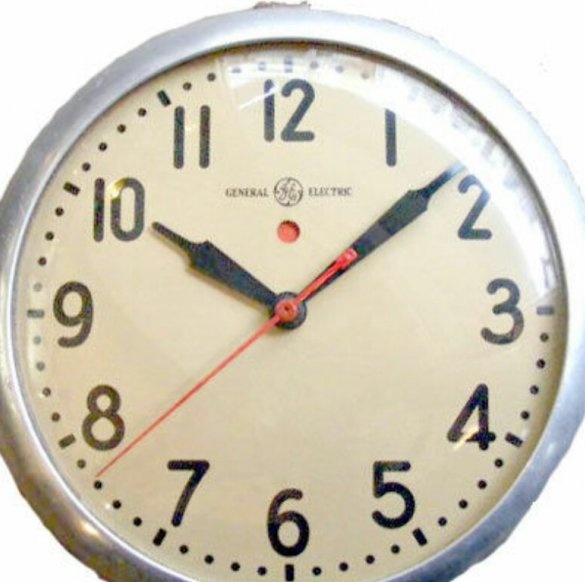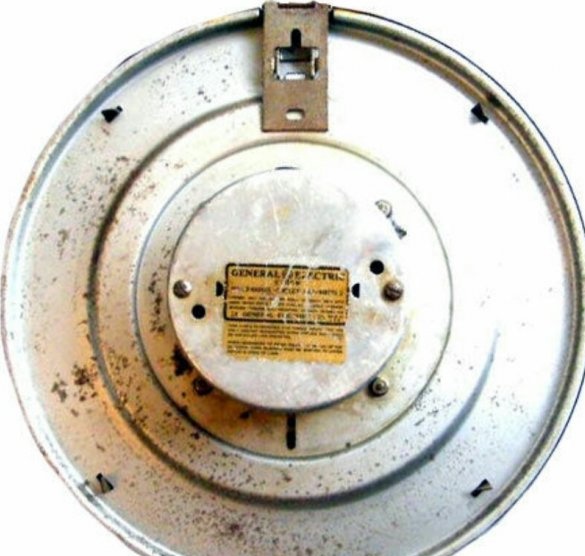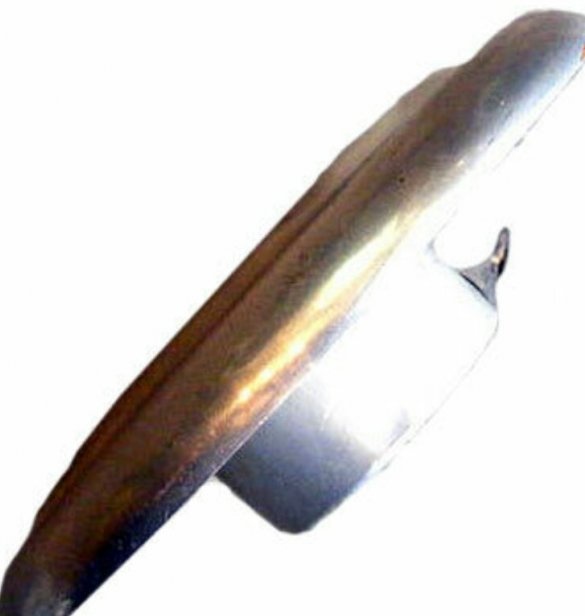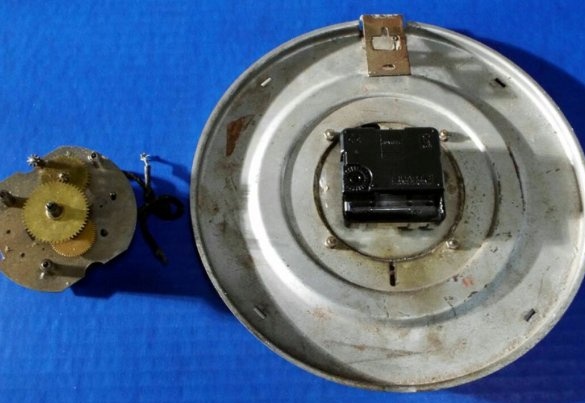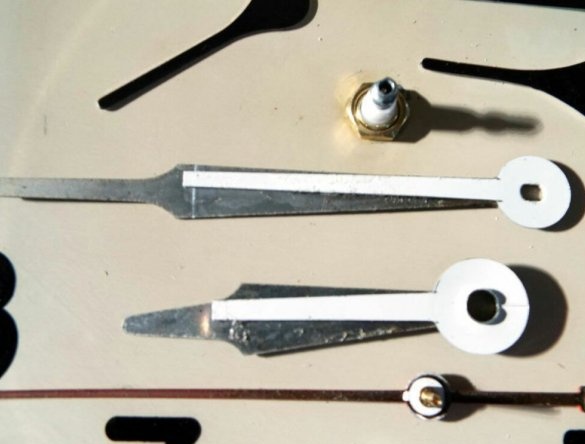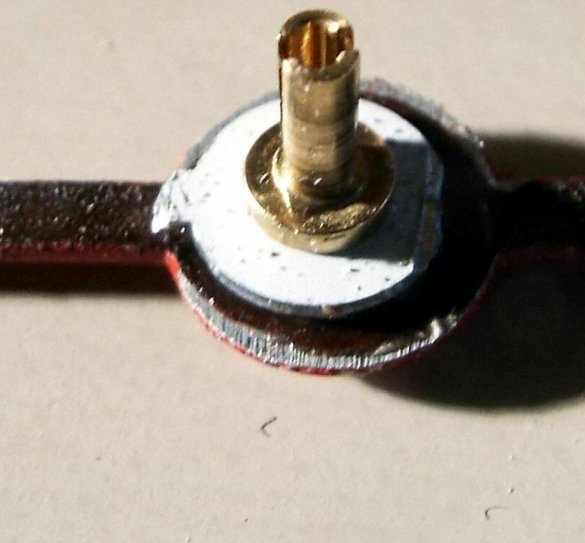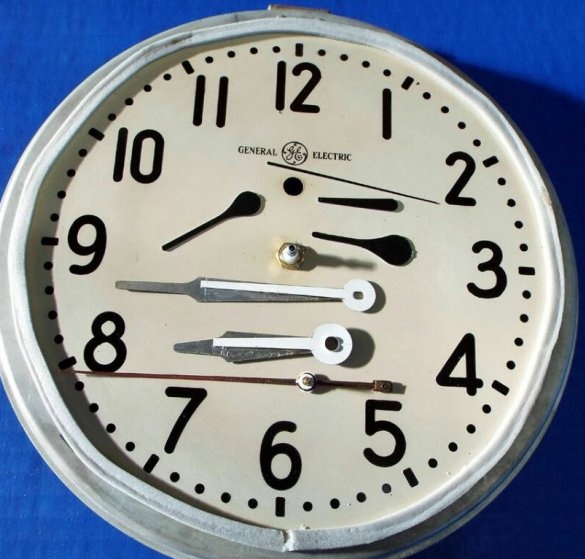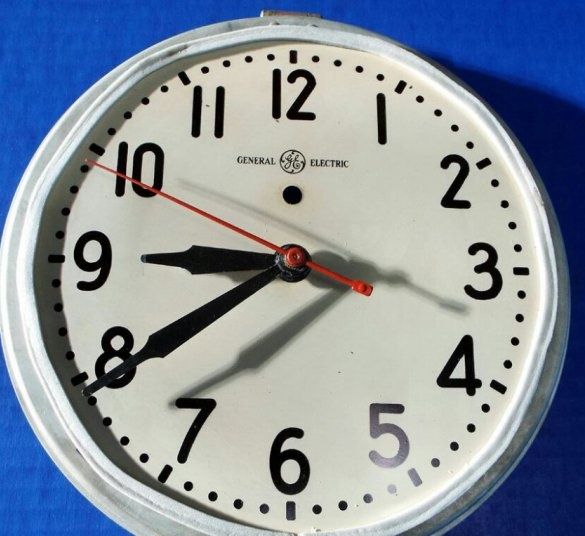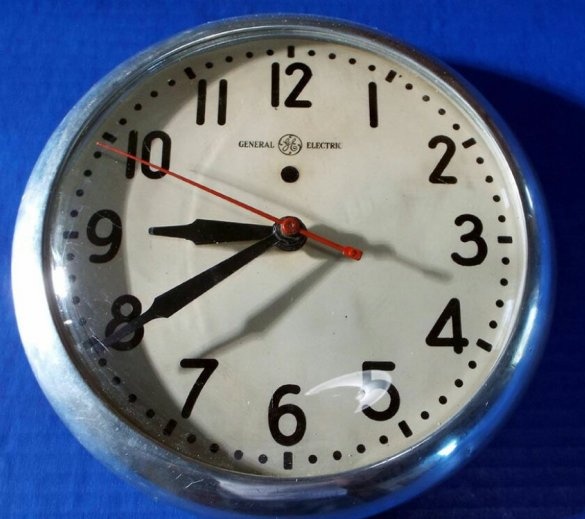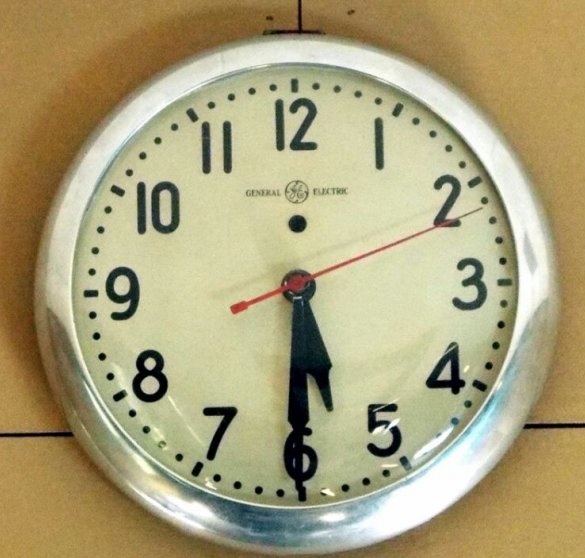In most vintage watches, replacing the mechanism with a modern one does not cause much difficulty, but it immediately catches the eye that the hands are some different. That would save the original! Let's see how the author of Instructables managed this task under the nickname TechEditor. He had a very long 1F608 watch by General Electric:
This is a clock with a synchronous motor, the speed of which is tied to the frequency of the network. But once in the engine the grease dried up, and the mechanism stopped. It was not easy to lubricate such an engine, and the master acquired a new similar one. This expensive component lasted only three months. So I had to, as the video blogger Kokovin says, "spend authenticity." No, of course, not everything is so scary. After all, the master did not send the old mechanism into the bin, but simply postponed it. And set in the watch the usual, modern:
To preserve the original arrows, the master can use the fact that they have wider holes than modern ones. And just glued the modern arrows to the old:
Well, in order to save the second hand, we had to make a more complex, three-layer design. But this should be done if the mechanism is smooth running, as in the version of the master. Many do not like such mechanisms, since they are uneconomical. When using the mechanism with a sharp move, the second hand will not have to be set at all, since its intermittent rotation will immediately give out a rework.
Well, there is a clock, there are reworked hands. And still there were parts that had to be bitten off by modern arrows so that they did not protrude beyond the original ones - they can be put on some washers, rods, pushers:
Done! The master returns the watch hands:
Glass and ring around it:
And then the watch itself - on the wall. Then sets the time:
In the original version, there is a flag in this watch that drops if the mains voltage disappears, signaling that the watch is behind. Now that the watch is not powered from the mains, you can simulate this flag by pasting the corresponding hole with red tape.
The electromechanical "old man", to whom the modern "artificial heart" has been transplanted, will delight residents of the house and guests for a long time to come.

